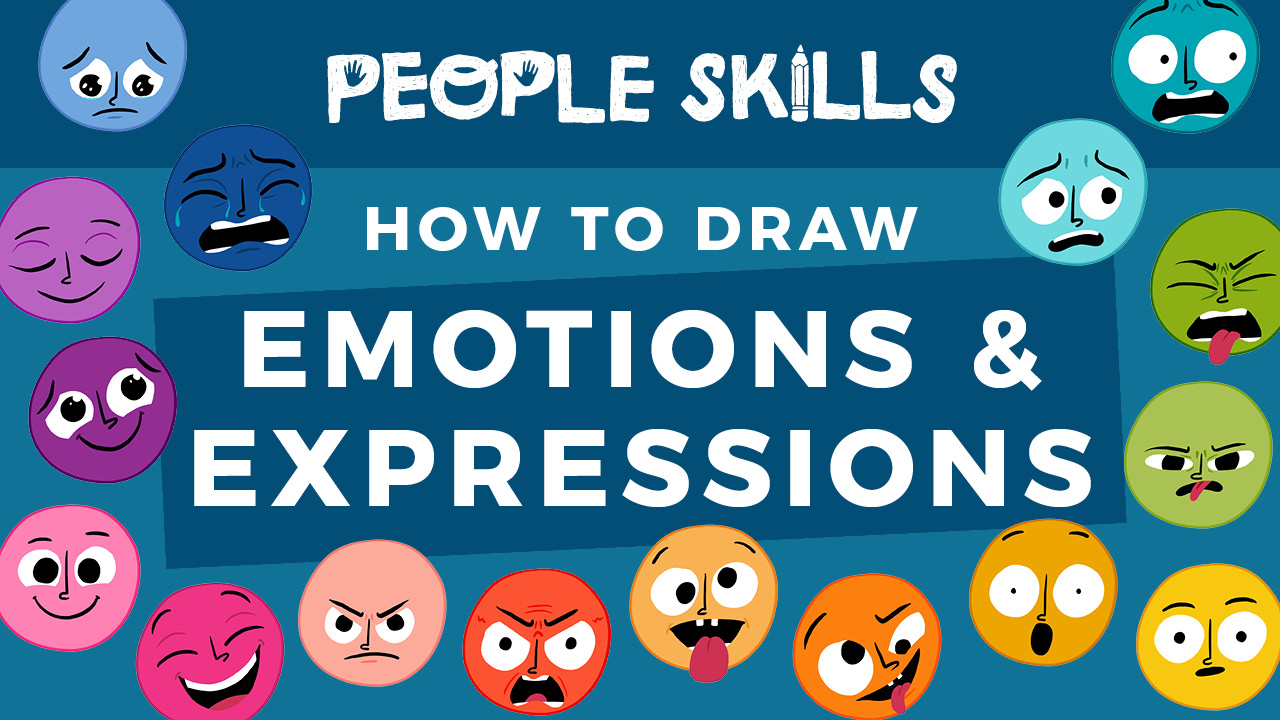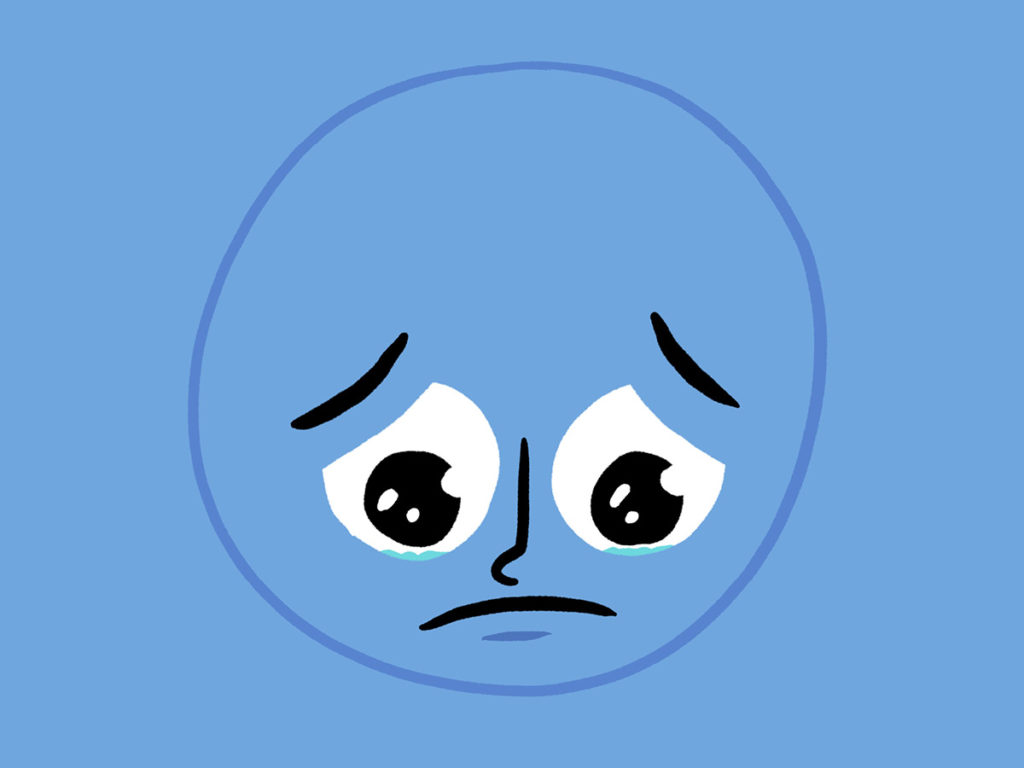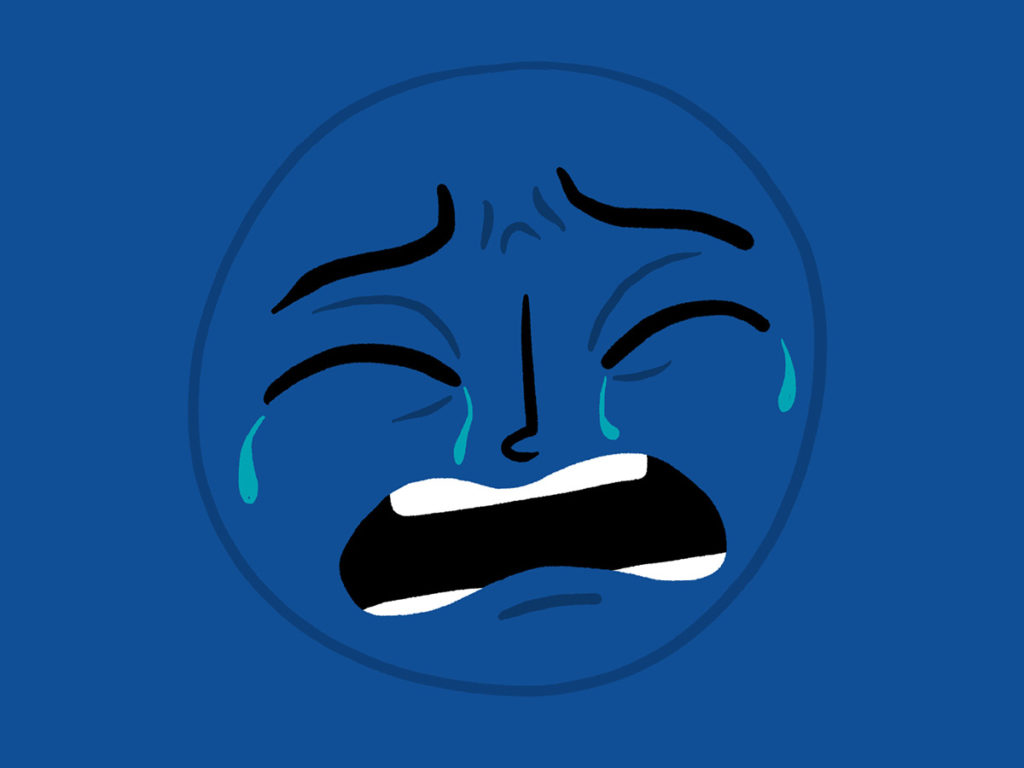©2022 Bardot Brush by Lisa Bardot // All Rights Reserved

A sad expression can convey feelings of grief, depression, disappointment, misery, or despair. Think about the reasons a person might be sad, and the intensity of the expression that might go along with that feeling. Conjure up some sad feelings and observe your face in a mirror.
Today we are drawing sad faces. Learn more below and check out the Table of Expressions to see all the emotions and how they can be depicted at a glance.

Someone sad is feeling disappointed, hopeless, grief, or a low mood. The head hangs low and the features get heavy.
EYE SHAPE: outside corners turned down
PUPIL: dilated and large
EYE GAZE: looking down
BROWS: inner corners pointed up, arches down
MOUTH: downturned, frowns, lip pouting
OTHER: head tilted down, eyes might be welling up with tears, extra reflections to show that eyes are wet

Someone in anguish is extremely distressed, so much that it feels painful. They might be crying heavily or screaming.
EYE SHAPE: nearly closed, sloping down at outside corners
PUPILS: hidden
EYE GAZE: hidden
BROWS: furrowed brow: skin wrinkled between eyebrows, arches down
MOUTH: open, corners down
OTHER: head may be tilted up, if crying out in pain
Draw faces that convey sadness. Determine your character’s neutral expression and then use the guidelines on this page to manipulate those feature into a sad expression. Draw the emotion as well as the intense version of that emotion, anguish, as well as the other sad emotions in-between, like regret, misery, grief, heartbreak and more. Look up reference photos of sad and sorrowful faces and figure out as many ways as you can to depict sadness.
Keep researching, observing and learning! I’ve made a Pinterest board full of additional resources to help you learn more about drawing expressions.
This lesson is a part of a month-long series that will get you you familiar with the basics of drawing humans, and help you develop your own people-drawing style. To learn more, check out the People Skills Intro, or continue on to the next lesson below.
We’ll stock your inbox with Procreate tips, new releases, and free goodies!
Bardot Brush was created by California-based illustration artist, teacher, and all-around creative person, Lisa Bardot.

©2022 Bardot Brush by Lisa Bardot // All Rights Reserved